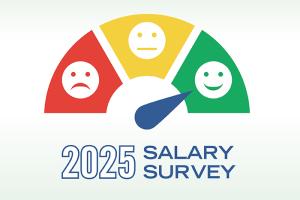Thinking critically to foster critical thinking team culture
Editor’s note: “Power Skills” is a 12-part series with one article posted monthly exploring the nontechnical tools today’s health care facilities professionals need to succeed and excel in their career goals. See more articles from the series here.
In my imagination, it’s a dry, hot, late August Tuesday morning at "St. Elsewhere Medical Center" in Mesa, Ariz. A series of mysterious power surges keep taking place. Tonya, director of facilities management, is diligently completing paperwork when her lead electrician, Jon, knocks on her office door and sticks his head in to tell her about the power surges’ impact on the hospital’s 7-year-old chiller.
“Hey Tonya! Can I interrupt you for a second?”
“Sure Jon, what’s up?”
“There have been three separate power surges this morning that are causing problems for the hospital’s chiller. Plus, it has been working overtime with the heat today.”
“Thanks for letting me know. Do you have everything you need to figure out what is causing the problem?”
“Yup, sure do!”
“The Ouija board?”
“Yes.”
“Magic 8 Ball?"
“Uh-huh.”
“Our in-house psychic, Joan?”
“Appointment is set for 2:30 p.m.”
“Spaghetti to throw at the wall?”
“Cafeteria is working on it right now.”
“Awesome, thanks Jon! Let me know how it turns out.”
“Thanks Tonya, will do!”
We are all very lucky that this flight of imagination IS NOT how facility management professionals, or anyone in a health care setting, approaches problem-solving. In reality, health care facility management professionals are extraordinary critical thinkers. They are, as cross-team collaboration software Asana describes in a 2021 blog post, people who identify a problem, research its causes, determine the relevance of the data found, ask questions about the data, identify the best solution, present their solution to others, make a decision and then analyze its impact. There is a reason why critical thinking is such a key “power skill” to have in everyone's toolbox in today’s marketplace.
But when it comes to working and collaborating as a team, how often do stellar critical thinkers lean more toward the board/ball/psychic/spaghetti paradigm as opposed to building team structures and cultures that incorporate critical thinking techniques into their own operations?
The following is from a 2019 Harvard Business Review article entitled “A Short Guide to Building Your Team’s Critical Thinking Skills”:
According to a 2016 survey of 63,924 managers and 14,167 recent graduates, critical thinking is the number one soft skill managers feel new graduates are lacking, with 60% feeling this way. This confirms what a Wall Street Journal analysis of standardized test scores given to freshmen and seniors at 200 colleges found: the average graduate from some of the most prestigious universities shows little or no improvement in critical thinking over four years. Employers fare no better. Half rate their employees’ critical thinking skills as average or worse.”
So how can a leader ensure they are fostering a team culture that enables critical thinking when it comes to how teams collaborate to achieve results?
Peter Facione, Ph.D., CEO of Measured Reasons LLC and author of the paper “Critical Thinking: A Statement of Expert Consensus for Purposes of Educational Assessment and Instruction,” highlights some key characteristics of critical thinkers. The expert panel he consulted in his research described critical thinkers as those who approach problems with:
- Clarity in stating the question or concern.
- Orderliness in working with complexity.
- Diligence in seeking relevant information.
- Reasonableness in selecting and applying criteria.
- Care in focusing attention on the concern at hand.
- Persistence though difficulties are encountered.
- Precision to the degree permitted by the subject and the circumstances.
Now, consider your teams and their collaborative problem-solving processes. Do they come to the table with a question or concern well clarified?
There is a stark difference between, "Why are sales of our mid-range chillers plateauing across the lower southwest in spite of increased need for the product?"and "What’s the deal with Arizona?"
Similarly, is there a well-documented process to seeking key information and criteria by which to analyze the problem? Team communication should sound closer to: "I’ve pulled the product’s sales data for the region for the last six years, along with data on the prospects that didn’t lead to sales. We should consider the top three cited reasons from the reports for purchase or non-purchase," as opposed to, "Yeah, I don’t know what the deal is with Arizona. Frank says we’ve had bad luck in that market since the Cardinals lost the Super Bowl."
As important as it is for teams to demonstrate critical thinking when collaborating, the signals teams receive from their leaders are just as important as fostering an environment that rewards critical thinking and is in return rewarded by that critical thinking. Facione offers a series of 10 questions leaders should be asking themselves and their teams when confronting issues and opportunities.
- How is this situation like the prior situations?
- How is this situation NOT like prior situations?
- What happens if we take this element out of the equation?
- What happens if we insert this factor into the equation?
- What exactly is the problem, and is it changing over time?
- How can we adjust and adapt to those changes?
- Why are our standard approaches consistently failing?
- How can we seize the advantage?
- Why are our people over-simplifying the complexity confronting us?
- Am I, are we, missing anything that opposition leaders are seeing?
It is human nature to follow paths laid out before us. Are you and your team leaders laying out a decision-making path for your team to follow that is clearly marked with processes and procedures that empower critical thinking? Are individual teams being forced to draw their own critical thinking maps, inventing processes to solve problems but not sharing those newly discovered processes with other teams? Are critical thinking best practices integrated into your standard operating procedures? Take the guides to critical thinking shared by experts like Facione and use them to analyze your own organization’s critical thinking culture.
Will improving you and your team’s capacity for critical thinking support improved results? I’ve consulted my own critical thinking resources, and the answer came up, “It is decidedly so,” that is, right after, “Reply hazy, try again.”
Adam Bazer, MPD, is director of education at the American Society for Health Care Engineering.





